What is a Turnbuckle? A Look at the Types, Parts, Installation, and Uses
A turnbuckle is a basic piece of rigging equipment that can be used in a diverse set of tension-related applications.
A turnbuckle is a common rigging device that is used to adjust tension and reduce slack in a rope, cable, or similar tensioning assembly.
Turnbuckles are a diverse product line that are used in a variety of applications across many different industries. They can be used in applications as simple as providing tension in a fence or perimeter cable, or something as complicated as the construction of a suspension bridge.
Like other rigging hardware products, turnbuckles are available in many different sizes, configurations, and types. We realize that there aren’t a lot of available resources out there to educate you on turnbuckles, especially if you aren’t already familiar with them.
Ensuring you are using and selecting the right device is important to maintaining a safe and effective rigging program. We want to make sure you have the information necessary to help you determine the right type of turnbuckle for your application—or whether you should be using a turnbuckle in the first place.
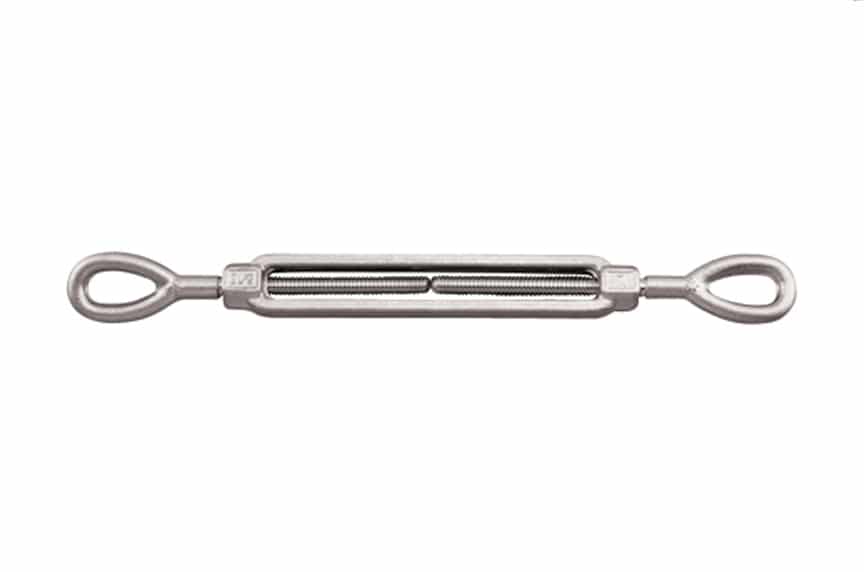
With this article, our goal is to help you form a base-level understanding of turnbuckles, how they work, and how they can be properly utilized during your next project. In this article, you’ll find basic information about:
- What a turnbuckle is
- Parts and types of turnbuckles
- Applications
- Basic installation steps
- Turnbuckle materials
- Markings/identification
- Removal from service criteria
What is a Turnbuckle?
A turnbuckle is a piece of hardware used to eliminate slack and adjust tension in a rope, cable, or other tensioning system.
ASME B30.26 – Rigging Hardware defines a turnbuckle as “an adjustable device consisting of three primary components: a body, a right-hand threaded end fitting, and a left-hand threaded end fitting.”
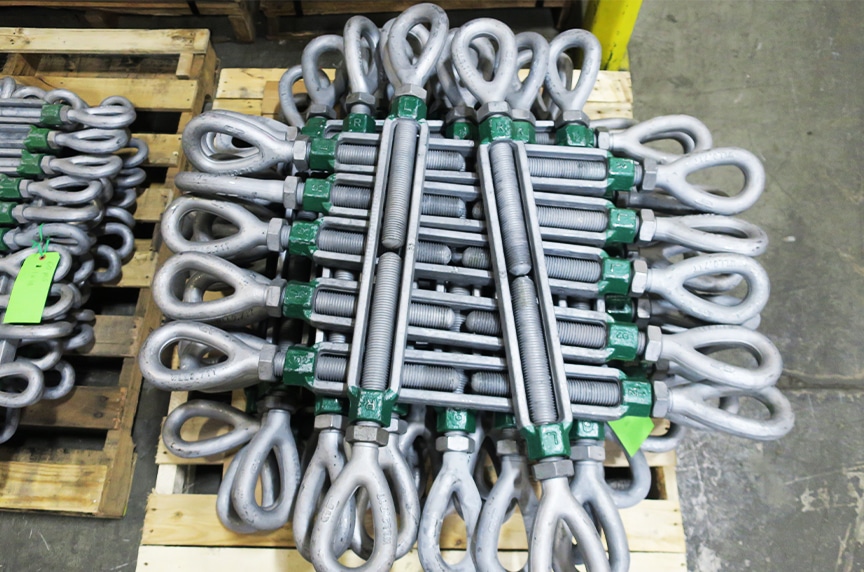
The end fitting on either side of a turnbuckle connects to the tensioning system and/or a securement point. The turnbuckle is then tightened or loosened to adjust tension and eliminate slack in the cable or rope is it connected to.
A turnbuckle may be used on its own or in conjunction with other turnbuckles to increase length in the assembly.
Parts of a Turnbuckle

Body: the metal frame in the center of the device that joins the two threaded end fittings. The body itself is turned to adjust tension by extending and retracting the end fittings.
The body may be one of two types: closed or open. An open body turnbuckle is the more traditional type where the threads are visible through the body frame. Closed body turnbuckles—also known as pipe bodies—encase the threads in a closed frame to create a slimmer profile that fits in tighter spaces.
Nut: also referred to as a jam nut, the nut can be placed on the threads of the end fittings and tightened against the turnbuckle body to help prevent the device from loosening or unthreading.
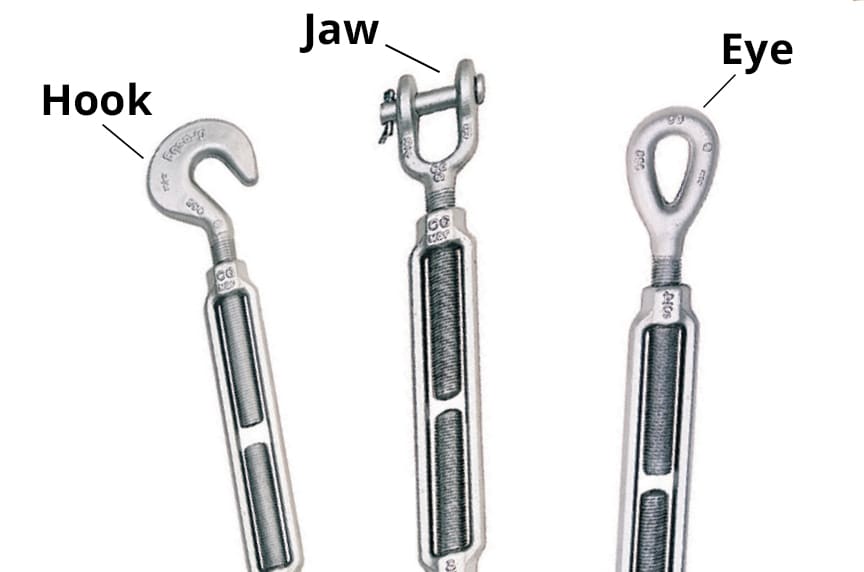
End Fittings: these are the two connection points that screw into the opposite ends of the turnbuckle body. One end fitting is right-hand threaded while the other is left-hand threaded. This allows you to turn the body to adjust tension after installation without moving the end fittings.
There are three main types of end fittings that can be used together in any combination on either end of the turnbuckle:
- Hook end – a hook end fitting is used to create temporary connections because they are easy to quickly connect and disconnect. They should never be used in connections where tension could unexpectedly release.
- Jaw end – a jaw end fitting consists of a jaw and bolt secured together by a nut or a pin. These are used to connect to components that cannot be opened, such as an eye bolt.
- Eye end – an eye end fitting is a closed loop that can be connected to a shackle or quick link.
Thread diameter: this is the diameter measurement of the threaded portion of the end fittings. The greater the thread diameter is, the greater the load-bearing capacity of the turnbuckle and vice versa.
Take-up length: this is the total length that the end fittings can screw into and out of the body to “take up” tension. Take-up length can be measured in terms of “opened” or “closed” end fittings: the end fittings are either fully extended or fully retracted.
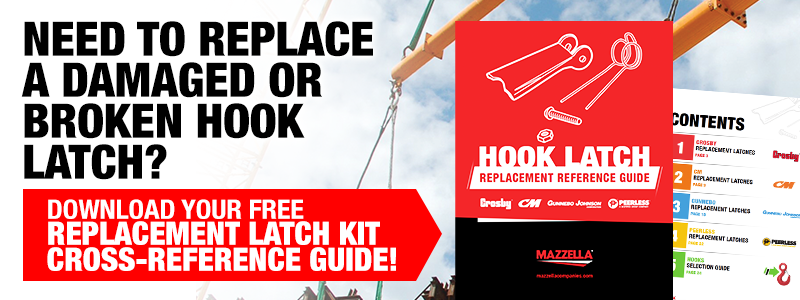
Types of Turnbuckles
Turnbuckle types are, essentially, named for the combination of end fittings used in the device. The most common end fitting combinations are:
- Jaw and jaw
- Eye and jaw
- Eye and eye
- Hook and hook
- Hook and eye
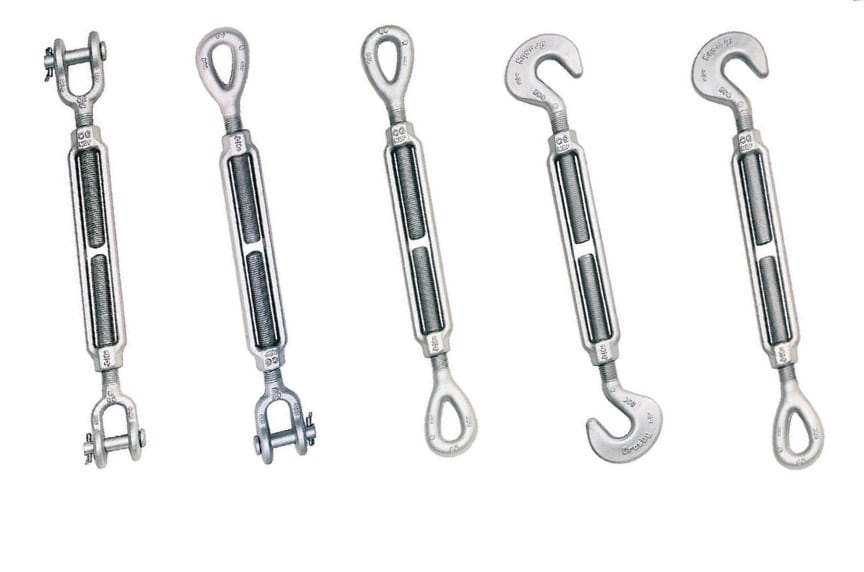
As you might have guessed, an eye and eye turnbuckle has an eye end fitting on either end. Likewise, a hook and eye turnbuckle has a hook end fitting on one end and an eye end fitting on the other.
The combination of end fittings is determined by what the turnbuckles need to connect to and whether the solution is permanent or temporary.
A hook is used to attach to temporary connection points that may be frequently connected and disconnected. A jaw is used to attach to a connection point that does not open, such as an eye bolt or link. An eye is used to attach to a connection point that can open such as a shackle or quick link.
Common Uses for Turnbuckles
As mentioned above, turnbuckles can be used with a length of rope, cable, or other rigging assembly as a connection point to adjust slack and tension within the line.
Turnbuckles can be used for something as simple as a fence or as complicated as a suspension bridge. Some industries that commonly use turnbuckles are:
- Sports and entertainment – turnbuckles are used to act as a securement point and to create tension in the ropes surrounding a wrestling or boxing ring. You can’t see them, of course, since they are covered in soft material for the athletes’ safety!
- Maritime transport – turnbuckles are commonly used to tension a ship’s lashing and rigging components.
- Construction – turnbuckles are often used to provide tension support for suspension bridges, large buildings, and highway guardrail cable assemblies.
- Aviation – cables and wires present within the construction of an aircraft—wings, flight control systems, etc—are tensioned by turnbuckles.
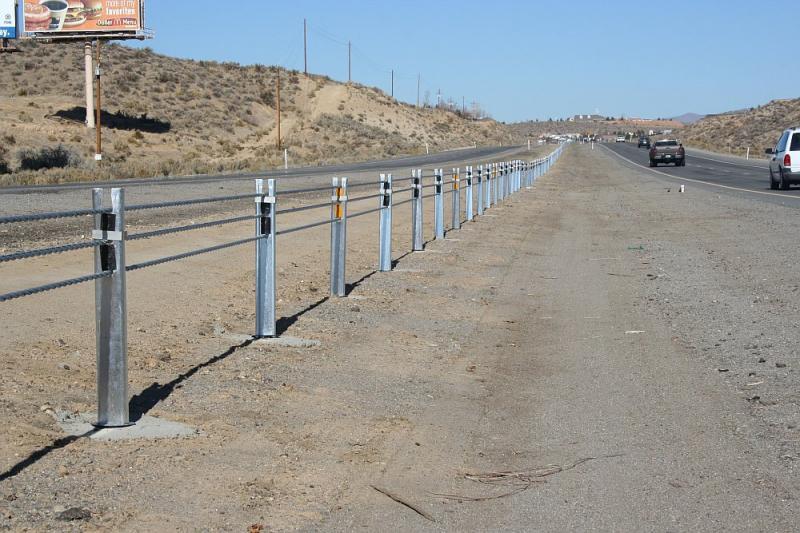
Installation of Turnbuckles
Proper installation of any type of rigging equipment is essential to maintaining safe and effective applications—turnbuckles are no different. Installing a turnbuckle is a rather straightforward process, here are the steps:
- Unscrew end fittings from the body until completely extended to the full take-up length
- Connect end fittings on either end to desired securement point
- For an eye end fitting, simply loop it through whatever securement point it will be connected to (shackle, quick link, etc.)
- For a hook end fitting, simply loop the hook around whatever point it will be [temporarily] secured to (thimble, shackle, etc.)
- For a jaw end fitting, unscrew the bolt from the jaw, place the securement point between the clevis ears (thimble, eye bolt, etc), place the bolt through, and screw it shut.
- Rotate the turnbuckle to move the end fittings closer together until you reach the desired tension in the rope or cable.
- Tighten nuts—if you are using them—down to the body.
Like all other rigging devices, be sure to keep the Working Load Limit (WLL) in mind when installing your turnbuckles.
Material: Galvanized vs. Stainless Steel Turnbuckles
The most common turnbuckle materials are galvanized and stainless steel. Choosing between these two materials is important if factors like price and corrosion resistance are important to you.
Stainless steel turnbuckles are ideal for use in outdoor and saltwater environments, as they are extremely resistant to rust and corrosion. If corrosion is a concern, stainless steel is likely the best choice for your turnbuckle material.
Galvanized steel turnbuckles are cheaper than stainless steel and can also be used in outdoor applications, but with caution, as they are not as resistant to corrosion as stainless steel turnbuckles.
Turnbuckle Markings / Identification
According to ASME B30.26 – Rigging Hardware, each turnbuckle shall be durably marked by the manufacturer to show:
- Name or trademark of a manufacturer
- Size or rated load
Turnbuckle Inspection and Removal From Service Criteria
During the course of a turnbuckle inspection, remove it from service if any of the conditions listed in ASME B30.26 – Rigging Hardware are present:
- Missing or illegible identification
- Indications of heat damage, including weld spatter or arc strikes
- Excessive pitting or corrosion
- Bent, twisted, distorted, stretched, elongated, cracked, or broken load-bearing components
- Excessive nicks or gouges
- A 10% reduction of the original or catalog dimension at any point
- Excessive thread damage or wear
- Evidence of unauthorized welding or modification
- Other conditions, including visible damage, that cause doubt as to continued use
Wrapping it Up
We hope that the information laid out in this article helps you to understand what turnbuckles are, how they function, and whether they can be applied to your rigging assemblies.
While turnbuckles are relatively simple when it comes to mechanics, they can be used to apply tension and eliminate slack in virtually any tensioning system.
Here are some factors to consider when determining the proper turnbuckle type and configuration that is best for you:
- The three main types of end fittings can be combined in any configuration to allow the turnbuckle to attach to open, closed, temporary, or permanent connection points.
- Turnbuckles have two common material types—galvanized steel and stainless steel— to choose from and have a relatively simple installation procedure.
- Like any other piece of hardware, make sure you are following the mandated removal from service criteria and identification standards.
How We Can Help
At Mazzella, we stock and distribute turnbuckles in a variety of different configurations and sizes in both galvanized and stainless steel. Our turnbuckles and turnbuckle parts are manufactured by premium vendors, including Crosby and Suncor Stainless.
Our inventory also includes a range of rigging hardware including, hooks, hoist rings, shackles, eye bolts, and more. If you want to schedule a consultation or receive a quote for your next lifting project, contact one of our Lifting Specialists today.
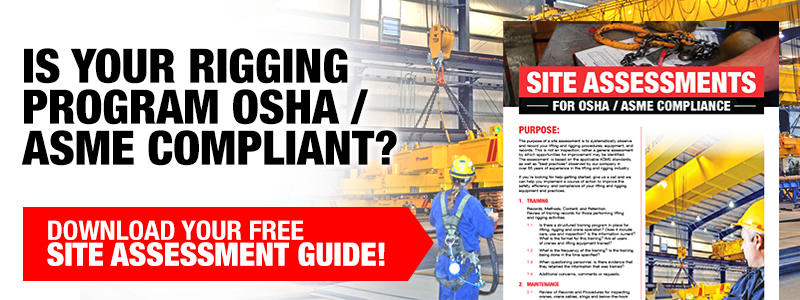

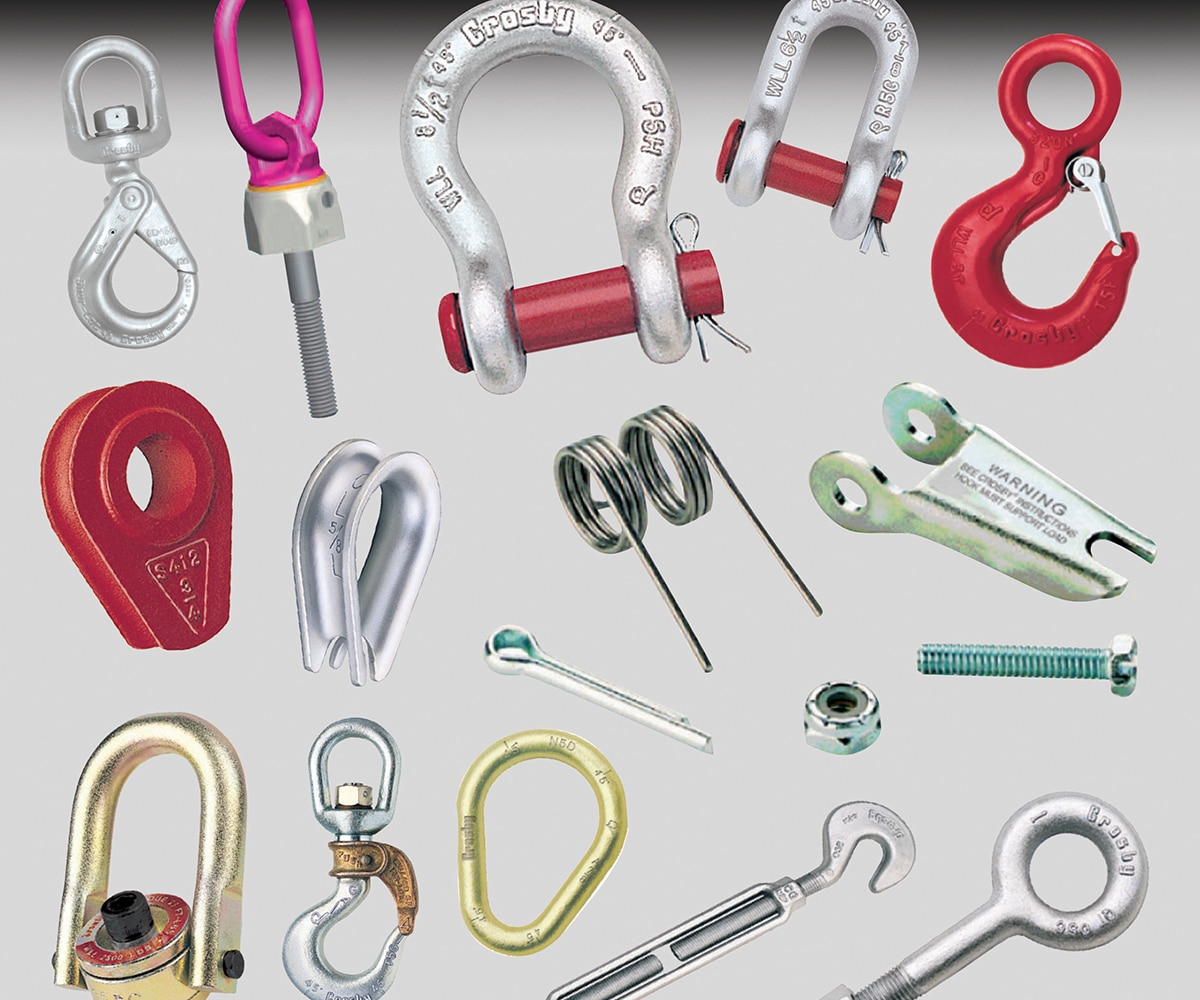
Rigging Hardware
Are you looking for access to a complete inventory of rigging and lifting products from the largest manufacturers in the world?
Contact us if you need shackles, hoist rings, eye bolts, hooks, master rings, links, turnbuckles, and more!
Learn more about lifting and rigging hardware!
Copyright 2020. Mazzella Companies.
